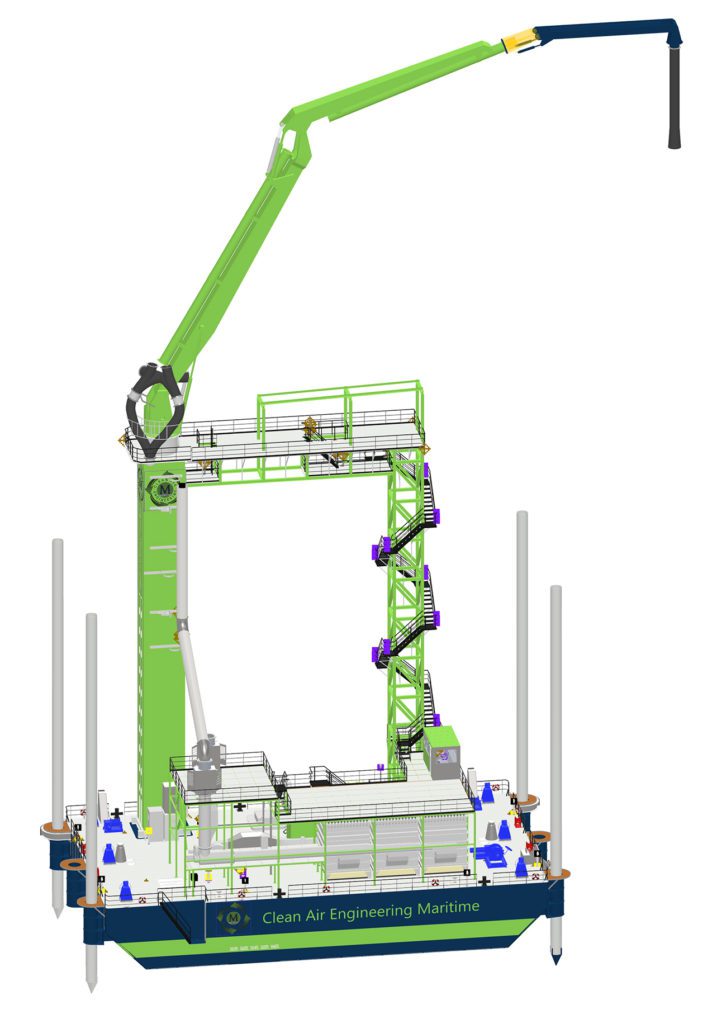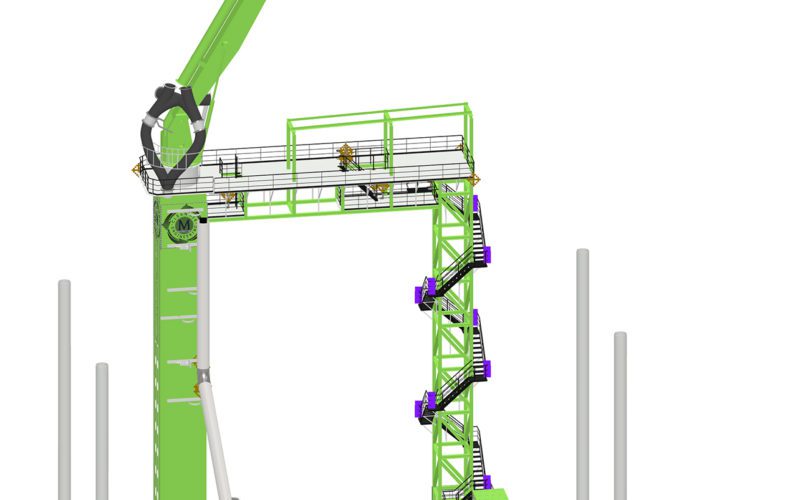(SPAY, Germany) — The German propulsion expert Schottel has been awarded a contract to supply rudder propellers on a self-propelled, barge-based stack exhaust capture and treatment system. It will be produced and operated by U.S. company Clean Air Engineering – Maritime (CAE-M), based in San Pedro, Calif.
The system is called the Marine Exhaust Treatment System or METS-3 and was designed by Fassmer Techincal Projects and will be built at U.S. shipyard Greenbrier Companies of Portland, Ore. Additional METS systems will be produced and operated in several other California seaports.

The 85-foot-long and 42-foot-wide barge will be operated by CAE-M to capture and treat stack exhaust of vessels in the ports of Long Beach and Los Angeles.
“It is more important than ever to develop innovative technologies that help reduce emissions in ports to an absolute minimum,” said Nicholas Tonsich, president at Clean Air Engineering – Maritime. “Clean Air Engineering – Maritime’s latest METS-3 will succeed in doing exactly that. We are excited to have Schottel as an experienced partner at our side and that they are part of this flagship project.”
“A number of factors had to be taken into account in the design of this next-generation CAE-M METS-3, which is why we were looking for a reliable partner to cooperate with,” said Tim Klaybor, managing director at Fassmer USA. “Schottel and Fassmer are sharing a long-standing relationship. We have made positive experiences, with both reliable products and competent service.”
The main propulsion system of the barge consists of two electrically-driven Schottel rudder propellers type SRP 150 (400 kW each) featuring propeller diameters of 4 feet. The SRPs will run on biodegradable oils (EALs). The scope of delivery includes the complete electrical package, which comprises electric motors, frequency drives as well as a portable control station for the Schottel MasterStick.
The Schottel MasterStick is a joystick system which can control up to six propulsion units simultaneously. The thrust and the alignment of the propulsion units are controlled and distributed by a software in such a way that all translational and rotational movements required for manoeuvring the barge are executed optimally. The ship’s movement can thus be controlled intuitively and comfortably in any desired directions of motion or in a combination of those.
Clean Air Engineering – Maritime, founded in 2010, develops and operates systems that remove diesel emissions from the auxiliary engines and boilers of oceangoing vessels while at berth or anchor. Based in the ports of Los Angeles and Long Beach, CAE-M closely works together with many leaders in the shipping industry. The continued goal is to support ports globally in controlling and reducing emissions.
– Schottel

